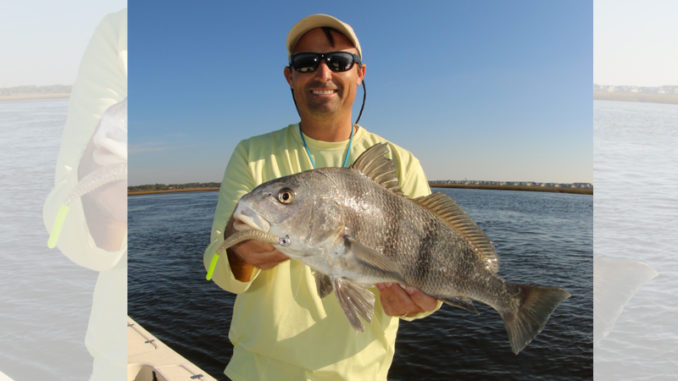
It’s an age-old question, but what’s the right answer?
Anglers can view fishing as a game, like football, baseball or golf. Choosing the most effective plays, best players and using the right equipment at the right time lends the best opportunities for success.
Anglers must overcome many variables to become successful. As methods begin to payoff, variables shift. So anglers are forced to switch to other tactics.
Landing that big stringer of fish ultimately depends upon angling technique, time of year, bait choice, presentation, and location.
At the end of the day, location is by far the most important factor. But the others are almost just as important to yield a successful day of fishing.
Even in great locations, anglers can still fail
Even if the boat is situated in the perfect location with many fish, anglers often go home empty-handed and disappointed if they aren’t using the right lures, baits, or techniques.
So what’s best — live baits, fresh dead baits or artificial lures?
In some cases, all of above will land a stringer of fish. But most of the time, one type of bait or lure will work best.
The easy answer to the question is to use the bait that best resembles what they are eating. Alternatively, even more obvious of an answer, live bait usually is the best choice in saltwater.
But that’s not always the case
In fact, live bait is usually hard for feeding fish to ignore, but other options are sometimes better picks.
For example, if you’re fishing for Spanish mackerel, live shrimp might not be the best choice if the Spanish are slashing glass minnows at the surface. Even a live glass minnow might not be the best choice to entice a Spanish mackerel. A fast-action Clark Spoon or Stingsilver pulled rapidly through the water might be a better choice.
Of course, the solitary glass minnow dangling in the water wouldn’t last long in the open ocean with a school of Spanish mackerel around. But Spanish are slash-and-dash feeders. They’ll eat the glass minnow, but the hooks won’t always end up in the jaws of a fish.
Using live bait leads to missed opportunities
Now, the angler has to rewind the terminal gear back to the boat for a re-baiting session. That’s a missed opportunity as the school moves away from the boat. But an artificial lure will keep on working until the hook sinks deeply past the barb in the mouth of the fish.
A lively swimming fish or shrimp in front of a predator is awful tempting in most cases and usually live bait is hard to beat.
Flounders, spotted seatrout and redfish tend to prefer live bait in most cases. Speckled trout love live shrimp and cannot pass up a lively hooked shrimp that’s flailing its legs. But that’s not to say a shrimp-mimicking artificial lure won’t work. But live shrimp will usually out fish shrimp imitations every day.
Dead baits have their place
Dead baits can be great in the right situations. For instance, frozen cigar minnow pulled behind a boat tend to work just as good for king mackerels as do live menhaden. Menhadens sometimes can be difficult to locate and catch, so the time spent chasing baits could be spent more profitably as offshore fishing time.
Redfish feed on live fish, shrimp and crabs on a daily basis but also gobble up plenty of recently dead bait as well. Spot-tails are bottom-feeders mostly and have poor vision.
The magic trick for catching fish with dead baits is to have the freshest dead baits possible. Just as with other fish, finding the freshest baits will improve chances of landing a good stringer of fish.
Artificials can be just as deadly as any bait
Many professional guides believe anglers can catch more and sometimes bigger fish with artificial lures instead of live or dead baits.
The late Captain Jimmy Price of Southport, N.C., was one of these guides. He was among the best trout and flounder guides on the East Coast.
Artificial baits work fantastically well, especially in an expert’s hands, such as Capt. Jimmy. If they didn’t work, the tackle market wouldn’t be gigantic.
Choosing the right lures is very much a trial-and-error process. To the novice angler, artificial lures will pay off eventually. But it’ll usually take some time figuring out how to present the lures most effectively.
Matching the hatch or using lures similar in size to baitfish will allow for more strikes. Knowing which colors and which size lures to use at the appropriate time will determine if and how many fish are caught.
It takes time to learn, but it ain’t rocket science. Fish get more credit than they deserve.
Most fish can be enticed to strike any form of tackle or baits. Knowing which bait to use at the right time dictates success.
So let weather or fishing conditions dictate bait or lure choices.
Experience always pays off in the end. However, the most successful anglers equip themselves during a fishing trip with multiple bait or lure choices, including artificial, freshly dead and live baits.
A prepared angler always will have the best chance to go home with a healthy stringer of fish for the grill.




Be the first to comment